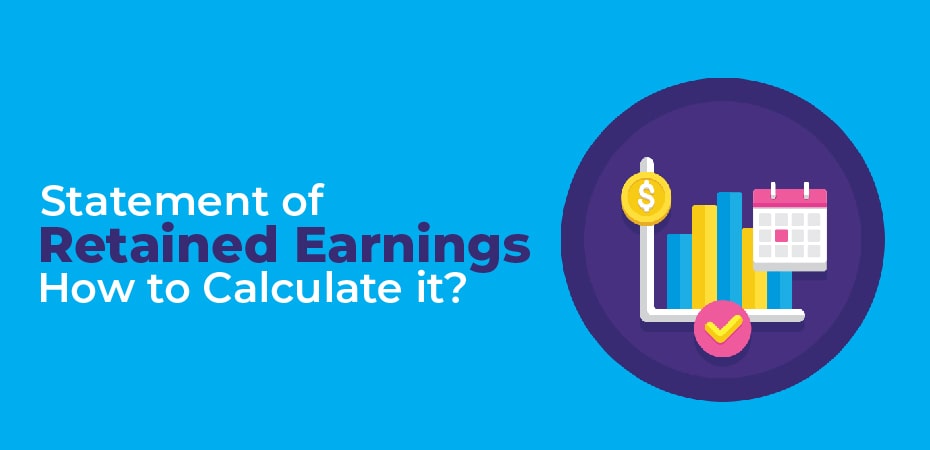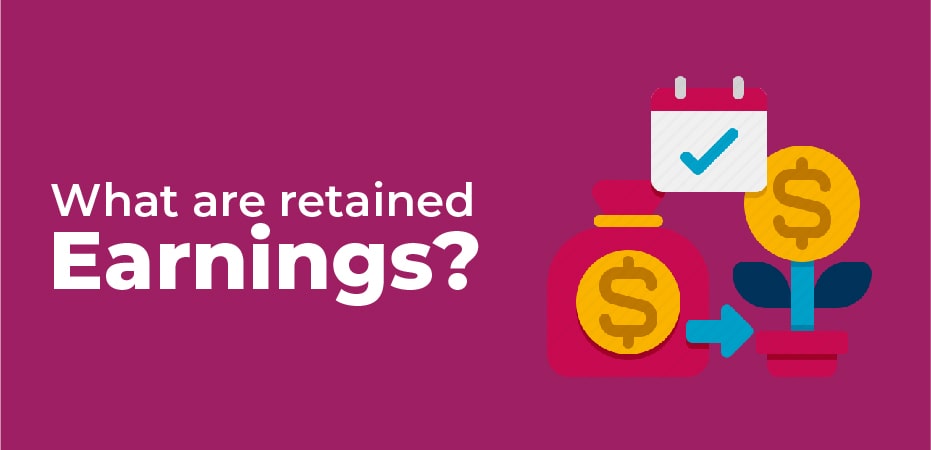
A statement of retained earnings, or a retained earnings statement, is a short but crucial financial statement. It’s an overview of changes in the amount of retained earnings during a given accounting period. Broadly, a company’s retained earnings are the profits left over after paying out dividends to shareholders.
If there are retained earnings, owners might use all of this capital to reinvest in the business and grow faster. Others might split the gains or distribute the surplus to investors.
Businesses usually publish retained earnings statements on a quarterly and yearly basis. However, you can post one at any time. Startups, for example, might issue them more often. That’s because these statements hold essential information for business investors and lenders.
In this article, we’ll provide the retained earnings formula and explain how to prepare a statement of retained earnings. You’ll also learn some ways to use retained earnings. Finally, we’ll explain what these statements communicate in the business world.

What are retained earnings?
Retained earnings are income that a company has generated during its history and kept rather than paying dividends. This balance is generated using a combination of financial statements, which we’ll review later.
Retained earnings are reported in a couple of different places. Generally, they’re added to the bottom of a balance sheet within the shareholders’ equity section. This is done at the end of the accounting cycle, monthly, quarterly, or longer. Here are the two main ways retained earnings are published:
- Listed on a balance sheet under the shareholders’ equity or owner’s equity section, one of the three main sections on a balance sheet. (Assets and liabilities are the other two sections.)
- They were published as a standalone summary report known as a statement of retained earnings as needed.
Retained earnings vs. owner’s equity
Retained earnings specifically apply to corporations because this business structure is set up to have shareholders. If you own a sole proprietorship, you’ll create a statement of owner’s equity instead of a statement of retained earnings.
Before we go any further, this is an excellent spot to talk about your small business accounting. If you haven’t already, you need to set up an accounting system. To calculate retained earnings, generate other financial statements, and prepare the report, you need accurate financial data. Without it, you’ll make costly mistakes and invite an IRS audit, fines, or penalties. Please read our guide on how to set up new business accounting.
How to calculate retained earnings
To find retained earnings, you add the past period’s retained earnings to net income (or loss) and then subtract dividend payouts. Here is the retained earnings formula:
Retained Earnings = Beginning Period Retained Earnings + Net Income (or Loss) – Cash Dividends – Stock Dividends.
If you’re calculating retained earnings for the first time, your beginning balance is zero. Net income is found on your company’s profit and loss statement (also called an income statement). You’ll refer to the balance sheet to find cash dividends and stock dividends on your balance sheet.
A retained earnings balance isn’t always a positive number. This happens if the current period’s net loss is greater than the beginning period balance. Or, if you pay out more dividends than retained earnings, you’ll see a negative balance.
Ways to use retained earnings
You can take your retained earnings in many different directions. You might invest these net profits into new revenue-generating activities or use them as working capital. You could purchase new business assets, like equipment, machinery, property, or vehicles. You might also set these earnings aside to pay off debt obligations. Here are some other examples:
- Launch a new product line or service: Startup founders inevitably reach a point when they must either expand their product line and audience or risk shrinking. Retained earnings present an opportunity to develop that second successful product.
- Expand your business: Hire more staff, open a new location, upgrade your office location, or otherwise expand your operations.
- Pay off debts, loans, or other forms of credit: Get ahead on your small business debt payments.
- Payout dividends to shareholders: If your business can afford it, paybacks are attractive to current and prospective investors.
How to prepare a statement of retained earnings in 5 steps
A statement of retained earnings can be a standalone document or appended to the balance sheet at the end of each accounting period. Like other financial statements, a retained earnings statement is structured as an equation.
It leads with the retained earnings reported at the beginning of the period. Then, it lists balance adjustments based on changes in net income, cash dividends, and stock dividends. It ends with the new retained earnings balance for the accounting period. This closing balance will be the beginning balance for the next reporting cycle.
Follow these steps to prepare a statement of retained earnings. (Note: You or your accountant needs to have your firm’s balance sheet and income statement on hand.)
Add the heading
At the top, add a three-line heading. The first line contains your business name. The second line is the document title, such as “Statement of Retained Earnings.” The third line indicates the accounting period for the report. For example, “For the Year 2019” or “For the Quarter Ended March 31, 2019.”
Record the previous year’s balance
This is the first line item. If you’ve prepared this statement before, you’ll carry over the last period’s beginning balance. If this is your first statement of retained earnings, your starting balance is zero.
Let’s say your retained earnings last year were $12,000. This is what the first line would look like:
Beginning Retained Earnings Balance: $12,000
Add net income
Find net income on your income statement. If it’s a net loss, subtract it from the beginning balance. In this example, we’ll say your business earned $10,000.
Beginning Retained Earnings Balance: $12,000
Plus: Net Income $10,000
Subtract any dividends paid out to shareholders
If your company has a dividend policy and you paid out dividends in that accounting period, subtract that number from net income. If not, subtract $0.
Beginning Retained Earnings Balance: $12,000
Plus: Net Income $10,000
Minus: Dividends ($5,000)
Note: Dividends are treated as a debit or reduction, whether or not they’re paid out.
Calculate the total retained earnings
After subtracting the number of dividends, you’ll arrive at the ending retained earnings balance for this accounting period. This is the amount you’ll post to the retained earnings account on your next balance sheet.
Beginning Retained Earnings Balance: $12,000
Plus: Net Income $10,000
Minus: Dividends ($5,000)
Ending Retained Earnings Balance: $17,000
If you are your bookkeeper or accountant, always double-check these figures with a financial advisor.







